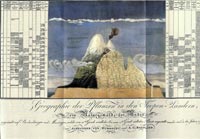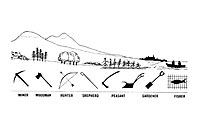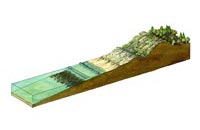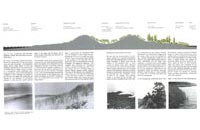- Home
- About CATS
- The Transect
- Transect Codes Council
- Resources & Links
- Contact CATS
- CATS Programs
- Research
- Publications
- Education
- AWARDS
- CATS TOOLS
- Codes
- Modules
- Images
 |
Historic Humboldt-Chimborazo This first transect was conceived by Alexander Von Humboldt in 1793. It is taken across the southern tip of South America, from the Atlantic to the Pacific and is vertically exaggerated. This curious document has notations on the surface of the earth, beneath the surface, and also, apparently, the atmospheric conditions. Duany Plater-Zyberk & Company |
 |
Geddes’ Valley Section A century after the Humboldt transect, the Scotsman Patrick Geddes drew the “valley section”, taken from a ridgeline to shoreline. It is the first transect to show natural conditions with their associated human presence, presented only in terms of exploitation-- a 19th century conception. Duany Plater-Zyberk & Company |
 |
Natural Transect In the early 20th century, the natural transect became the foundation of the science of habitat. The evidence that certain flora and fauna flourished symbiotically together, and within a specific mineral and climactic environment, became the ethical basis for the protection of species. Duany Plater-Zyberk & Company |
 |
McHarg’s Natural Transect This transect appears in Ian McHarg’s Design With Nature of 1963. It is a clear exposition of natural ecozones. McHarg’s brilliant analytical/ operational system never integrated the human habitat, which was simply relegated to wherever nature was least valuable. In this sense. it is a step backwards from the Geddes transect of a half-century earlier. Duany Plater-Zyberk & Company |